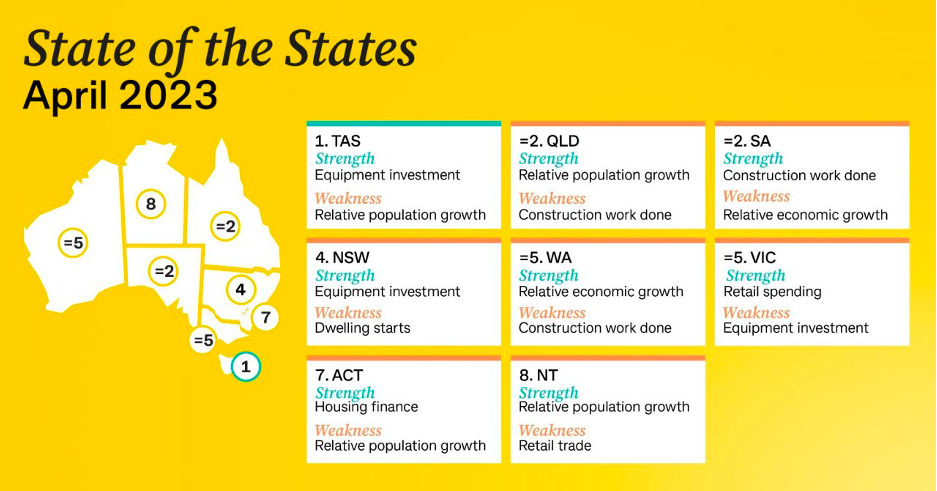Queensland and South Australia tie for second place

Tasmania has snatched back Queensland’s spot as Australia’s best-performing economy.
This was according to CommSec’s State of the States report, a quarterly ranking of economic performance that uses the latest available information to compare eight key indicators: economic growth, retail spending, equipment investment, unemployment, construction, population growth, housing finance, and dwelling commencements.
Tasmania made it back to the number-one spot thanks to a strong job market and more new dwelling builds. It was the 11th time in three years that the state has led the country as the top-performing economy.
Tying for second were Queensland and South Australia, followed by NSW in fourth, with Victoria and Western Australia tying for fifth. The ACT dropped down one place to seventh, while the Northern Territory held steady in eighth place.
Craig James (pictured above), CommSec chief economist, said Tasmania led the other states and territories when it came to a strong job market, high dwelling starts, and solid equipment investment, and placed second or third when it came to housing finance, economic growth, and construction work.
“Australia’s states and territory are all close on the performance indicators,” James said. “Looking ahead, sectors like construction, education, and consumer spending are likely to be supported by high rates of inbound migration. We anticipate ongoing growth in the Tasmania, Queensland, and South Australia economies in the next six months and that these states will remain at the top of the leaderboard.”
Trend unemployment in Tasmania sat at 3.8% in March, down 37.7% compared to the decade average. Dwelling starts, which were partly driven by population growth, were up 17.8% the decade average in Tasmania.
Despite ranking last, the Northern Territory has delivered the fastest job growth in the 12 months to March 2023, increasing 5.1%. This provides scope for improvement on consumer spending and housing demand.

Below are other state and territory highlights:
- Tasmania ranked first on dwelling starts, equipment investment and relative unemployment
- South Australia ranked first on construction work
- Queensland ranked first on relative population growth
- NSW ranked third on retail trade, equipment investment and relative unemployment
- Victoria ranked first on retail spending
- Western Australia ranked first on relative economic growth
- The ACT ranked first on housing finance
- The Northern Territory ranked fourth on relative economic growth and relative population growth
Also important for measuring economic momentum were the annual changes in economic indicators.
Tasmania, the Northern Territory, and Queensland each led annual changes on two of the eight economic indicators assessed, while the ACT and Western Australia each led on one indicator.
When it comes to annual growth rates, NSW breached the national average on six of the eight indicators. This was followed by Queensland, which exceeded the national annual growth rate on five of the eight indicators.
South Australia, Tasmania, and the ACT led the national average on four indicators. Western Australia, the Northern Territory, and Victoria exceeded the national average growth rate on three indicators, CommSec’s State of the States report found.
Use the comment section below to tell us how you felt about this.



